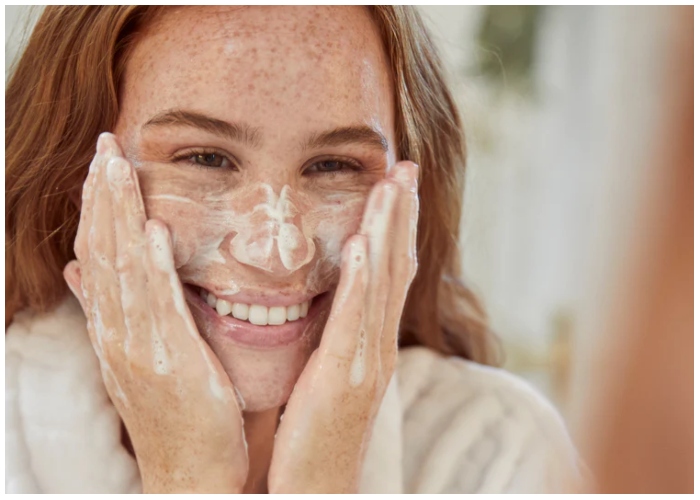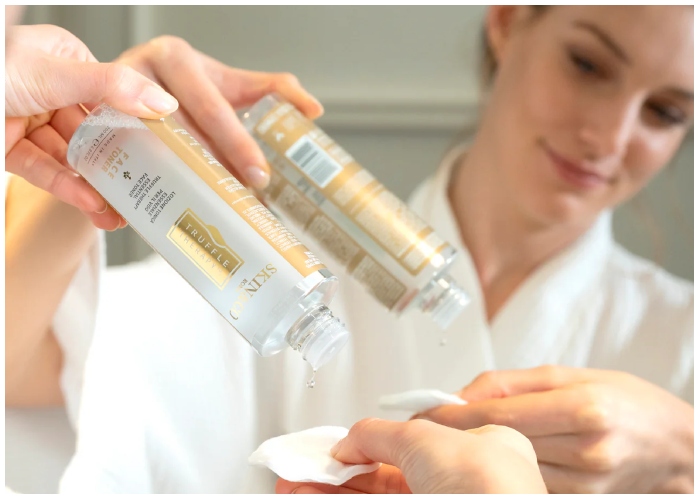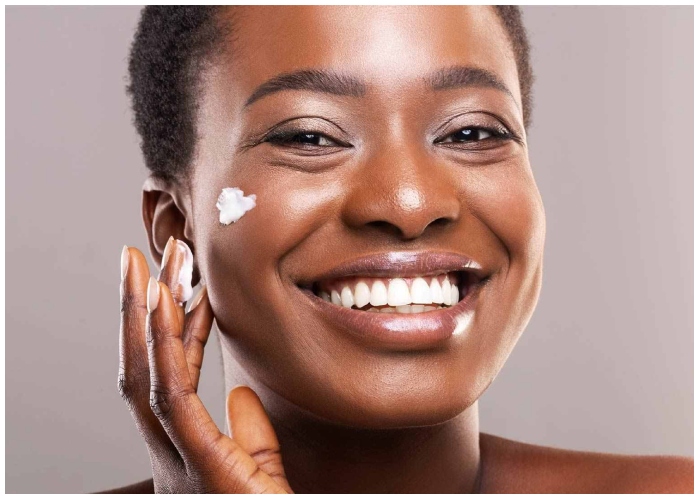Maintaining healthy skin is crucial not only for appearance but also for your overall well-being. An effective skincare routine can help protect your skin from the environmental aggressors it faces daily, such as pollutants and harmful UV rays, while keeping it nourished and rejuvenated. This guide will help you build a basic yet comprehensive skincare routine tailored to address your skin’s unique needs, ensuring it remains vibrant and healthy.
Step 1: Cleanse — The Essential First Step
Understanding the Importance of Cleansing: Cleansing is the cornerstone of any skincare routine. It is essential for removing accumulated dirt, oil, makeup, and other impurities that your skin picks up throughout the day and night. For those wearing makeup or sunscreen, start with an oil-based cleanser as it dissolves stubborn products gently without stripping the skin. Follow this with a water-based cleanser to ensure all residues are removed. This two-step process, known as double-cleansing, is particularly effective in maintaining clear and healthy skin.
Choosing the Right Cleanser: Select a cleanser based on your skin type. For oily skin, a foaming cleanser can help reduce excess oil, while a hydrating cleanser might be better for dry skin to help maintain its moisture balance. Sensitive skin types should look for gentle, non-irritating formulas that cleanse without causing redness or irritation.
Step 2: Exfoliate — Slough Away Dead Skin Cells
Benefits of Regular Exfoliation: Exfoliation is crucial for removing dead skin cells that can clog pores and cause dullness. Regular exfoliation allows for the renewal of the skin surface, leading to a brighter and smoother complexion. It also enhances the effectiveness of other skincare products by improving absorption.
Types of Exfoliants: There are two main types of exfoliants: physical and chemical. Physical exfoliants, such as scrubs and brushes, physically remove dead cells through friction. These are suitable for those without sensitive skin. Chemical exfoliants, including AHAs (like glycolic acid) and BHAs (like salicylic acid), work by breaking down the bonds between skin cells, allowing them to be washed away. These are generally suitable for all skin types and particularly effective for those dealing with acne or uneven skin texture.

Step 3: Tone — Balance and Refresh
The Role of Toners: Once considered just a pore-cleaning solution, toners now have a variety of uses depending on their formulation. They restore the skin’s pH balance, hydrate, protect against environmental damage, and provide the first layer of moisture. Using a toner after cleansing can remove any lingering impurities while soothing and preparing the skin for the next steps in your skincare routine.
Selecting a Toner: Choose a toner that addresses your specific skin concerns. Ingredients like rose water and chamomile are excellent for soothing sensitive skin, while witch hazel can be beneficial for oily or acne-prone skin due to its astringent properties.
Step 4: Treat — Target Specific Skin Concerns
Power of Serums and Treatments: This step involves applying products that target specific skin concerns, such as serums for aging skin, discoloration, texture irregularities, or acne treatments. These products are typically formulated with higher concentrations of active ingredients to address specific issues more effectively.
Customizing Your Treatment: For acne, products containing benzoyl peroxide or salicylic acid can be effective. If you’re concerned about wrinkles or loss of firmness, look for products with retinoids or peptides that promote collagen production. For pigmentation issues, vitamin C or other brightening agents can help even out skin tone.

Step 5: Moisturize — Hydrate and Protect
Importance of Moisturization: Every skin type needs moisture to repair itself and maintain a barrier against potential damage. This step locks in moisture and the active ingredients applied in previous steps. During the day, use a moisturizer with SPF to protect against sun damage, one of the primary causes of premature aging.
Choosing a Moisturizer: Your moisturizer should complement your skin type and condition. For oily skin, a lightweight, oil-free moisturizer will hydrate without adding extra oil. Dry skin types may require a richer, cream-based moisturizer to provide sufficient hydration. If you have sensitive skin, look for fragrance-free and hypoallergenic products to minimize the risk of irritation.
Consistency is Key to Success
To see real improvements in your skin, consistency is crucial. Regular application of your skincare routine, morning and night, will help maintain the health of your skin and improve its appearance over time. It’s also important to regularly evaluate the effectiveness of your products and make adjustments as your skin’s needs change with age, seasons, and other factors.
By following these foundational steps, you can create a skincare routine that not only addresses your current skin concerns but also provides preventive care, helping you maintain a healthy, radiant complexion for years to come. Remember, the best routine is one that you can stick to consistently, so keep it manageable and suited to your lifestyle and skin type.
